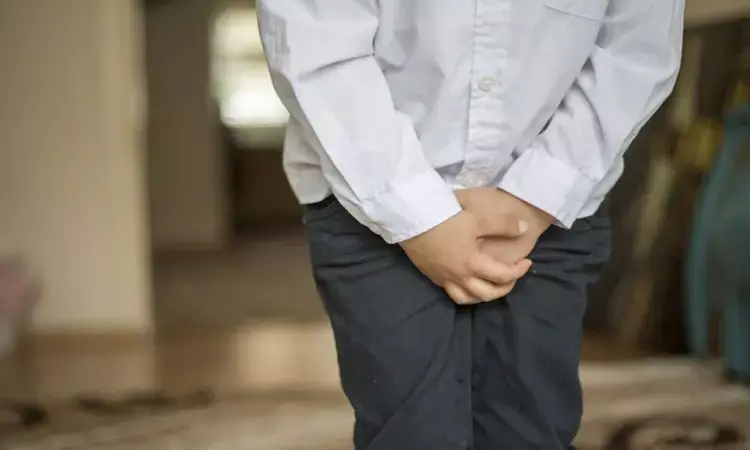- Home
- Medical news & Guidelines
- Anesthesiology
- Cardiology and CTVS
- Critical Care
- Dentistry
- Dermatology
- Diabetes and Endocrinology
- ENT
- Gastroenterology
- Medicine
- Nephrology
- Neurology
- Obstretics-Gynaecology
- Oncology
- Ophthalmology
- Orthopaedics
- Pediatrics-Neonatology
- Psychiatry
- Pulmonology
- Radiology
- Surgery
- Urology
- Laboratory Medicine
- Diet
- Nursing
- Paramedical
- Physiotherapy
- Health news
- Fact Check
- Bone Health Fact Check
- Brain Health Fact Check
- Cancer Related Fact Check
- Child Care Fact Check
- Dental and oral health fact check
- Diabetes and metabolic health fact check
- Diet and Nutrition Fact Check
- Eye and ENT Care Fact Check
- Fitness fact check
- Gut health fact check
- Heart health fact check
- Kidney health fact check
- Medical education fact check
- Men's health fact check
- Respiratory fact check
- Skin and hair care fact check
- Vaccine and Immunization fact check
- Women's health fact check
- AYUSH
- State News
- Andaman and Nicobar Islands
- Andhra Pradesh
- Arunachal Pradesh
- Assam
- Bihar
- Chandigarh
- Chattisgarh
- Dadra and Nagar Haveli
- Daman and Diu
- Delhi
- Goa
- Gujarat
- Haryana
- Himachal Pradesh
- Jammu & Kashmir
- Jharkhand
- Karnataka
- Kerala
- Ladakh
- Lakshadweep
- Madhya Pradesh
- Maharashtra
- Manipur
- Meghalaya
- Mizoram
- Nagaland
- Odisha
- Puducherry
- Punjab
- Rajasthan
- Sikkim
- Tamil Nadu
- Telangana
- Tripura
- Uttar Pradesh
- Uttrakhand
- West Bengal
- Medical Education
- Industry
TURP by Thulium laser as effective as conventional TURP for BHP

UK: Both ThuVARP and TURP are equally effective for relieving the benign prostatic obstruction, TURP however, achieved a superior urinary flow rate (Qmax), according to a recent study in The Lancet journal.
As men age, almost all experience some form of prostatic hyperplasia often resulting in lower urinary tract symptoms or urinary retention due to benign prostatic obstruction. This can have a substantial impact on men's quality of life. Surgery is recommended to relieve the obstruction after such patients fail to respond to drug treatment. The main reasons for discontinuation of drug treatment are serious adverse effects, such as postural hypotension, asthenia, dizziness, and impairment of sexual function, or loss of efficacy over time.
Transurethral resection of the prostate (TURP) is the standard operation for benign prostatic obstruction. Thulium laser transurethral vaporesection of the prostate (ThuVARP) is a technique with suggested advantages over TURP, including reduced complications and hospital stay.
Prof Hashim Hashim, University of Bristol, Bristol, UK, and colleagues aimed to investigate TURP versus ThuVARP in men with lower urinary tract symptoms or urinary retention secondary to benign prostatic obstruction.
The researchers conducted a randomized, blinded, parallel-group, pragmatic equivalence trial. It included men in 7 UK hospitals with bothersome lower urinary tract symptoms or urinary retention secondary to benign prostatic obstruction. They were randomly assigned in the ratio 1:1 at the point of surgery to receive ThuVARP or TURP. Between July 23, 2014, and Dec 30, 2016, 410 men were randomly assigned to ThuVARP or TURP, 205 per study group.
Patients were masked until follow-up completion. Centres used their usual TURP procedure (monopolar or bipolar).
Co-primary outcomes were maximum urinary flow rate (Qmax) and International Prostate Symptom Score (IPSS) at 12-months post-surgery. Equivalence was defined as a difference of 2·5 points or less for IPSS and 4 mL per s or less for Qmax. Analysis was done according to the intention-to-treat principle.
Key findings of the study include:
- TURP was superior for Qmax (mean 23·2 mL per s for TURP and 20·2 mL per s for ThuVARP; adjusted difference in means −3·12).
- Equivalence was shown for IPSS (mean 6·3 for TURP and 6·4 for ThuVARP; adjusted difference in means 0·28).
- Mean hospital stay was 48 h in both study groups. 91 (45%) of 204 patients in the TURP group and 96 (47%) of 203 patients in the ThuVARP group had at least one complication.
"TURP and ThuVARP were equivalent for urinary symptom improvement (IPSS) 12-months post-surgery, and TURP was superior for Qmax. Anticipated laser benefits for ThuVARP of reduced hospital stay and complications were not observed," concluded the authors. "Our results suggest that it is appropriate that new treatment alternatives continue to be compared with the current standard of TURP, as per NICE guidelines," they wrote.
The study, "Thulium laser transurethral vaporesection of the prostate versus transurethral resection of the prostate for men with lower urinary tract symptoms or urinary retention (UNBLOCS): a randomised controlled trial," is published in The Lancet.
DOI: https://doi.org/10.1016/S0140-6736(20)30537-7
Dr Kamal Kant Kohli-MBBS, DTCD- a chest specialist with more than 30 years of practice and a flair for writing clinical articles, Dr Kamal Kant Kohli joined Medical Dialogues as a Chief Editor of Medical News. Besides writing articles, as an editor, he proofreads and verifies all the medical content published on Medical Dialogues including those coming from journals, studies,medical conferences,guidelines etc. Email: drkohli@medicaldialogues.in. Contact no. 011-43720751


